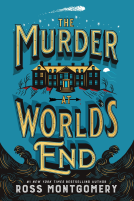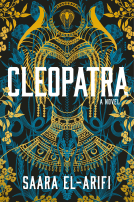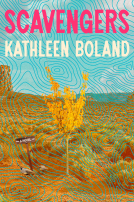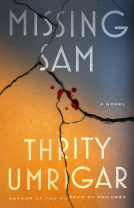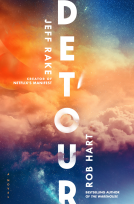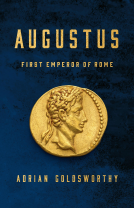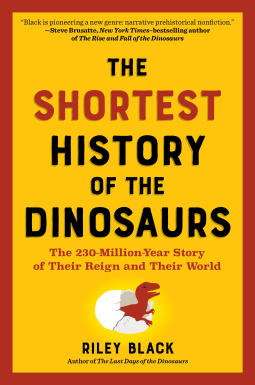
The Shortest History of the Dinosaurs
The 230-Million-Year Story of Their Time on Earth
by Riley Black
This title was previously available on NetGalley and is now archived.
Send NetGalley books directly to your Kindle or Kindle app
1
To read on a Kindle or Kindle app, please add kindle@netgalley.com as an approved email address to receive files in your Amazon account. Click here for step-by-step instructions.
2
Also find your Kindle email address within your Amazon account, and enter it here.
Pub Date Jun 10 2025 | Archive Date May 27 2025
Talking about this book? Use #TheShortestHistoryoftheDinosaurs #NetGalley. More hashtag tips!
Description
Despite their cultural influence, the grand narrative of the dinosaur story is rarely told. Most of us have heard of Stegosaurus and Tyrannosaurus, for example, but these two dinosaurs lived more than eighty million years apart—a greater span of time than the entire post–T. rex history of the planet. Furthermore, we often know even less about the environments these animals lived in—the other animals and plants inhabiting a dramatic changing Earth alongside the dinosaurs.
The Shortest History of the Dinosaurs tells the full story, a 230-million-year epic of small beginnings, spectacular golden periods, and eventual global domination—before an unthinkable asteroid event brought everything to a screeching halt, covering the major moments in evolution, extinction, and ecology. We learn that, for millions of years in the Triassic, dinosaurs were dog-sized—but slowly developing evolutionary traits like feathers and warm-bloodedness that would set them up for future success. In the Jurassic Period, these traits—and others like laying eggs and growing specialized air sacs—led to an era of rapid growth in dinosaur population and physical size. As Pangea continued to break apart, during the Cretaceous Period, dinosaurs traversed the globe, adapting to air and water—before a six-mile-wide asteroid hit Central America and brought the age of dinosaurs to a fiery end.
Using countless recent fossil discoveries, fresh understandings of genetics and evolution, and over fifty illustrations and maps, author Riley Black reveals the startling relationships dinosaurs shared with each other, the land they lived on, other animal species, and the earth as a whole.
Available Editions
| EDITION | Other Format |
| ISBN | 9798893030563 |
| PRICE | $16.95 (USD) |
| PAGES | 240 |
Links
Available on NetGalley
Average rating from 13 members
Featured Reviews
 Sabrina S, Reviewer
Sabrina S, Reviewer
I did not think I was going to love this book as much as I did! Growing up, I was never really a huge fan of dinosaurs like other people were and I didn’t really know much about them at all. I was interested in learning more about dinosaurs and how they lived millions of years ago and I am so glad I got the chance to read this book by Riley Black. I love how this book was written; it was so easy to understand and the author did a great job thoroughly explaining dinosaurs and what we know about them so far, which isn’t very much compared to how much there is still left to learn. The book is very succinct and I did not find the text to be bogged down with technical terms. I learned so much about dinosaurs including how some of them became fossils when they died and how researchers were able to learn more about their social behaviors, along with the different types of dinosaurs there were. I really appreciate how accessible the author made the research literature about dinosaurs to us readers. I think this is an amazing book for those of us who want to learn more about dinosaurs but do not know where to start.
Thank you to NetGalley for an ARC of this book in exchange for an honest review!
 Donna B, Librarian
Donna B, Librarian
I was never a dinosaur fan-closest I got was the over-the-top enthusiam that my son showed when he was 5 and I bought him dino bedding. But this book absolutely changed my mind-I now even know how to tell a saurischian from an ornithischian (hint its the position of their pubic bones.) Black has written many books on these creatures from millions of years ago, but this is her first stab at "Dinosaurs 101," and it is full of information that you never would have thought about. For example, herbivores ate small animals, and carnivores chomped on vegetation (and often, each other.) The reason birds might have lasted through the asteroid that wiped most of the life from our planet, was because some developed beaks and could eat nuts and seeds that were still on the ground. The horns and protuberances on some of the dinosaurs weren't just armor but probably served to help find mates. Dinosaurs were so prevelant because they hatched from eggs, so some of them had a chance to survive before becoming dino snacks. Baby dinosaurs were often small and cute until age 10, when they started to grow to a size that assured them of not becoming T. Rex's next meal. And the probability of bones becoming fossils, itself is very low, due to the conditions under which they form. There is so much more in this book to chew on, and many references to other sources that can help further your knowledge.
So I ask, why should little kids have all the fun of discovering dinosaurs-I look forward to making the trip to the Natural History Museum and standing in awe at all of ths disappeared life-read this book and come with me!
Readers who liked this book also liked:
Ross Montgomery
General Fiction (Adult), Historical Fiction, Mystery & Thrillers
Glenn Dixon
General Fiction (Adult), Literary Fiction, Sci Fi & Fantasy
